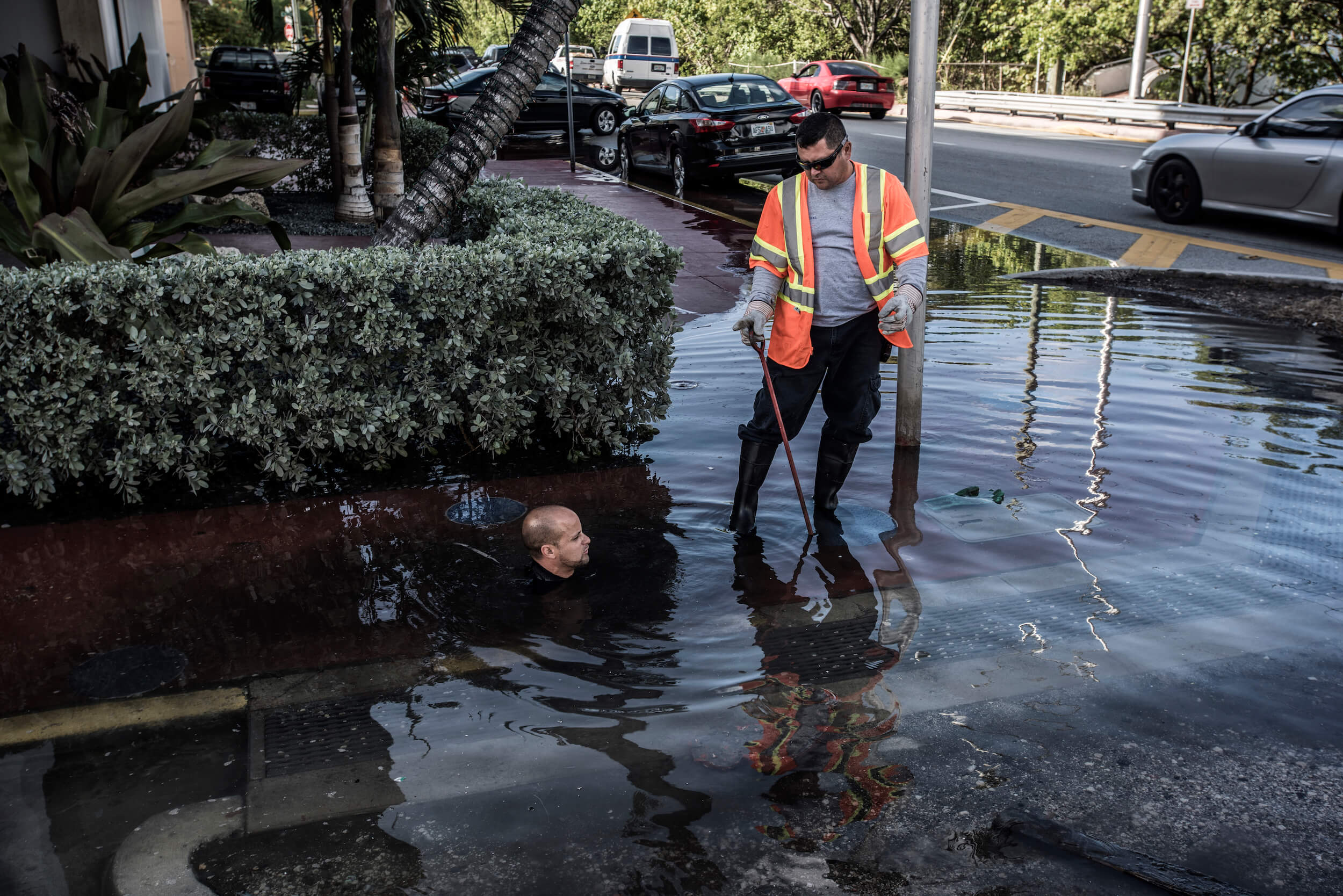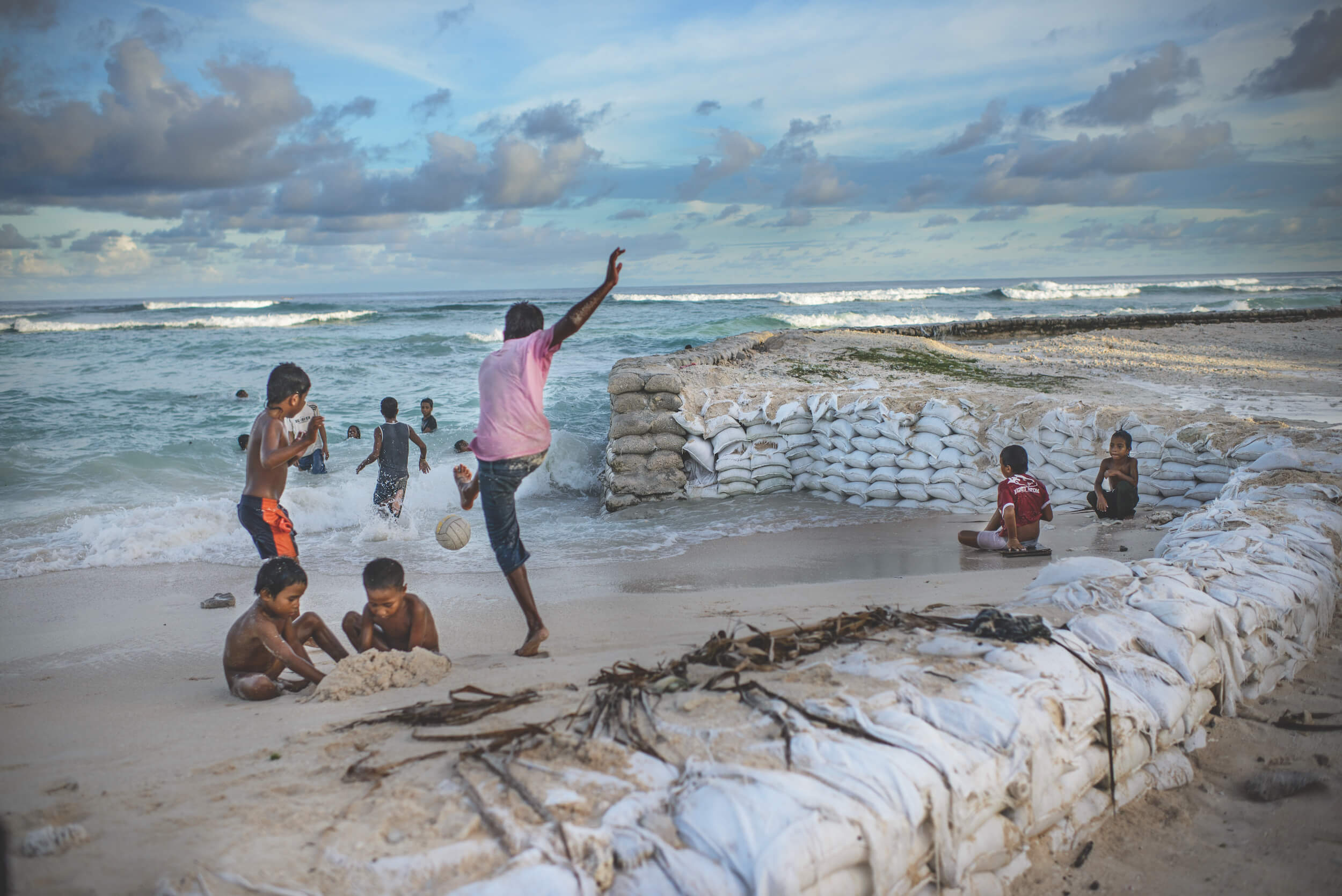Extreme weather events are occurring with ever greater frequency across the globe: wildfires rage uncontrolled across swaths of cherished habitats, and heavy rains, often coupled with cyclone-strength winds, are uprooting areas of human settlement and leaving near-total destruction in their wake. The climate is changing and perhaps the greatest (or most visible) manifestation of our warming world are rising sea levels that threaten to inundate coastlines and, in certain circumstances, render entire countries inhabitable. Rising Tide: Visualizing the Human Costs of Climate Change, currently on display at the Museum of the City of New York, is a traveling exhibition of Dutch photographer Kadir van Lohuizen’s exhaustive work documenting the damage wrought, and yet to come.
The project began in 2011 during a separate transmedia study of migration from Central America northward to the United States. Travel through the region revealed rising sea levels and temperatures as a primary culprit for the decline of agricultural productivity, and, in turn, growing political instability and poverty—factors driving out-migration. For Van Lohuizen, such circumstances begged the question that if the climate crisis is occurring in real-time in this corner of the world, then it must also be doing so elsewhere. To that effect, Rising Tide documents the dramatic consequences of climate change in Greenland, Bangladesh, Papua New Guinea, Kiribati, Fiji, Amsterdam, Panama, Miami, and neighborhoods across New York City.

The impact of rising sea levels and climate change is disproportionately falling on less-developed nations that have played a minor role, if any, in the degradation of the environment. That crime largely lies with the Global North and is perhaps why Van Lohuizen’s depiction of inaction in such regions is all the more exasperating. For example, Miami is built atop a foundation of porous limestone that even the mightiest of seawalls are incapable of protecting in the long run—it is expected that Miami Beach and the bay area will have to be evacuated by 2060—yet the carbon-laden building boom continues unabated. For New York, where the exhibition is currently located, Van Lohuizen highlights governmental failure to translate the near-catastrophic experience of Hurricane Sandy into a comprehensive flood control and mitigation strategy.

Van Lohuizen deployed several strategies to effectively highlight what the future holds for coastal areas. Most of the footage was captured at high tide to more accurately capture what a six-foot increase in sea levels will resemble only decades in the future. Aerial photography and video are deployed to further that point, a technique achieved first through the use of kites and, later, drones.
“Rivers and oceans will find their own way through the land,” noted Van Lohuizen. “The question is whether what we hope to save is affordable and worth the cost.”
Rising Tide: Visualizing the Human Costs of Climate Change
The Museum of the City of New York
1220 5th Avenue
Through January 2, 2022











